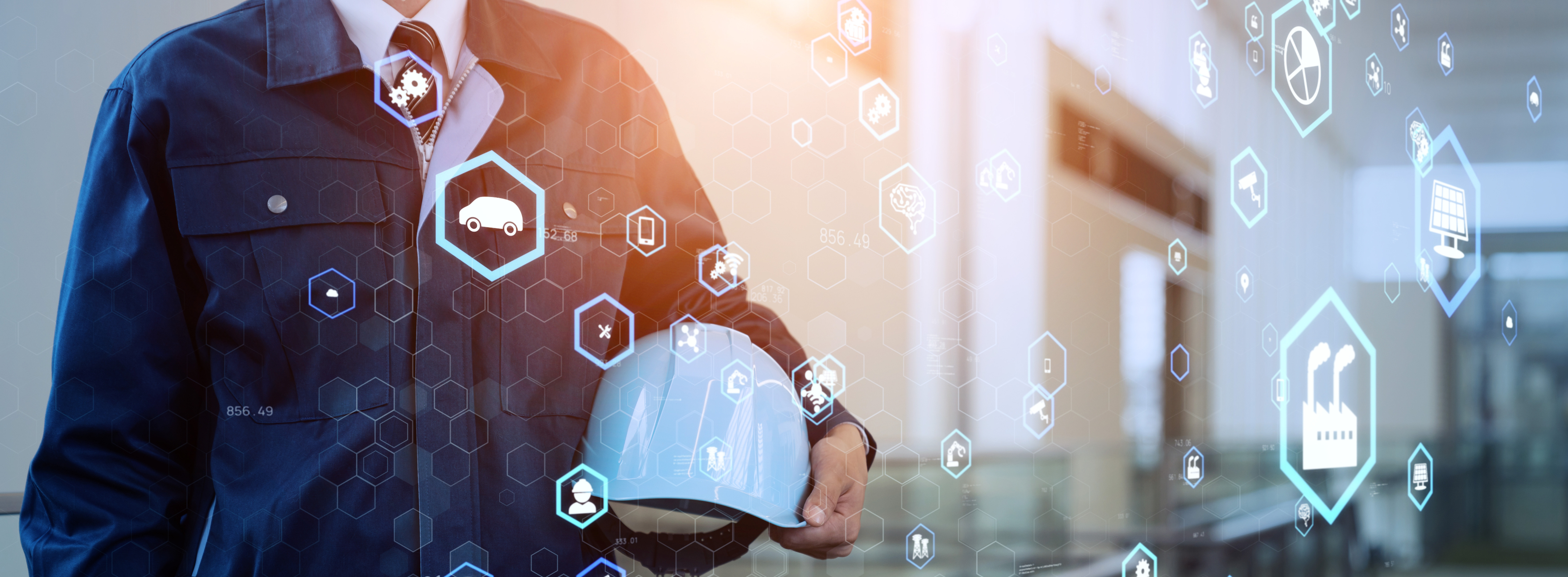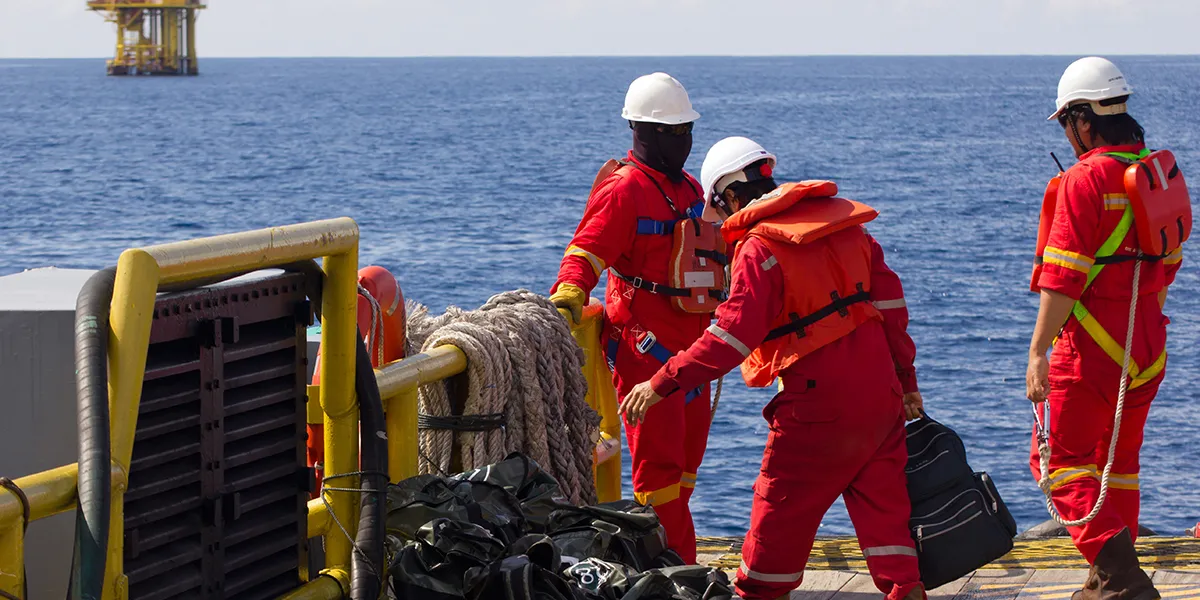Smart Safety in the Workplace: A Guide

As industries and workplace risks evolve, so too do the solutions available for organisations to mitigate them. Technological advancements have made many new and innovative safety solutions available to organisations eager to prevent incidents and maximise productivity. This guide explores what smart safety is, current workplace safety trends, and how modern technology can support an overall safer workplace.
How does technology support smart safety in the workplace?
What is smart safety?
Smart safety leverages modern technological advancements to improve traditional safety procedures and protocols. Thanks to new technology, companies now have greater access to real-time data on health and environmental conditions. Better data allows organisations to proactively identify risks, streamline safety protocols, and optimise productivity. As a result, smart safety transforms how different sectors approach workplace safety, making it more data-driven, adaptable, and effective. Smart safety often refers to solutions which use environmental or body worn sensors to capture data, an internet-of-things (IoT) connected infrastructure, and cloud service to provide the computation, analysis and reporting.
Workplace safety trends
Over the past decade workplace health and safety trends have continued to change, with more and more organisations focusing on employee well-being and utilising technology to help improve and enhance their safety performance. In addition, companies have a growing focus on the overall health and well-being of employees, with an increased emphasis on mental health and ergonomics. While these issues have been present for a long time, employers are starting to recognise the important connection between a mentally and physically healthy workforce and the impact on injury rates and programme costs.
Organisations around the world are beginning to implement strategies to promote employee wellness while reducing stress-related issues. There is strong evidence that demonstrates happier, healthier, and more comfortable workers are more productive. They’re also less likely to get injured on the job and more likely to stay with a company long-term, helping to increase employee morale and reduce turnover and recruitment costs.
With global warming, heat-related illnesses are another growing concern within workplace safety. Millions of workers experience extreme environmental heat in their daily working lives while wearing heavy personal protective equipment (PPE) and performing demanding physical labour. These risk factors can have severe consequences for workers when not managed properly. As the climate crisis drives temperatures higher, several countries have introduced restrictions and protective measures to combat heat stress, including penalties for non-compliance.
There is also an increased focus on employee training and education, especially regarding risk assessment and hazard identification. While these are considered staples of any workplace safety programme, some organisations have underplayed just how important they are to the overall success of an organisation. Unfortunately, some may have even considered training as something transactional, used to check a box to maintain compliance. Thankfully that is changing for the better.
When employees are provided with sufficient training and skills to identify and mitigate workplace risks, they are empowered and better able to stay safe and prevent future incidents. Employees cannot protect themselves from threats they cannot see, so proper identification training is crucial. Companies are starting to see that investing time and money into high-quality training is extremely beneficial.
Ultimately, as with most areas of modern life, workplace safety has shifted more and more towards technology. For example, EHS management software is now the norm within many organisations. It systematically helps them track injuries, incidents, and near-miss data, and provides analytics to help organisations understand them better. This software also helps companies streamline regulatory reporting to ensure nothing falls through the cracks. In addition, robotics and other technology significantly impact workplace safety, and companies are using them to perform traditionally risky tasks to reduce employee exposure.
How does technology support smart safety in the workplace?
Integrating technology into workplace safety procedures offers numerous benefits. IoT devices in a facility can provide real-time data to stakeholders on current environmental and employee health conditions. Smart safety solutions often use artificial intelligence and advanced algorithms to analyse data which helps decision-makers identify patterns and trends, pinpoint potential hazards, and implement measures to address concerns and prevent accidents proactively. Sophisticated insights can help businesses optimise their safety protocols and develop more targeted and effective preventive measures.
“Smart safety is a game-changer for safety programs. Implementing these new solutions means tapping into technology’s incredible potential to prevent accidents, boost productivity, and improve employee well-being. Now that we have greater access to real-time data, tools to analyse it effectively, and better communication across our entire organisation, improvements can happen exponentially faster. Data we never thought possible is now at our fingertips, where we can monitor vital signs, observe the environment, and track locations all from our device, giving us a comprehensive overview of the risks confronting workers. It’s incredible how much technology has changed safety and quickly become indispensable in our daily work lives.” – Kyle Schmoyer, CSP, Safety Director
In addition, smart safety solutions can include advanced communication tools that enable seamless information sharing among employees, supervisors, and management, including those in remote locations or lone working. As a result, better, more accurate communication and collaboration help ensure every employee knows current safety conditions and risks. Also, in the case of an emergency, these communication tools are vital in rapid response and minimising the impact of an incident.
Smart safety solutions
As the market evolves, many smart safety solutions are emerging, each boasting distinct features and advantages. Some notable examples include mobile apps that deliver real-time information about equipment status and maintenance requirements, helping to prevent equipment failure and the accidents that may follow. Another example is artificial intelligence analytics, that sifts through workplace data to discern trends and patterns, empowering companies to implement targeted safety measures that address specific concerns.
However, wearable technology is one of the smart safety solutions making the most significant impact on workplace safety and is gaining momentum in various industries. These devices track vital signs and environmental conditions, alerting workers and supervisors to potential hazards in real-time and ensuring prompt and proactive responses.
Among the wearable technologies available, Bodytrak stands out due to its multi-feature approach and highly accurate sensors. Bodytrak collects data on various parameters, including core body temperature, heart rate, fatigue and noise levels, to indicate an employee’s physiological response to workplace stressors. While incidents can be prevented, if employees require assistance their location is paramount when every second counts. Bodytrak’s solution includes geolocation so that employers can instantly identify where the user is located whether they are indoors or outdoors, allowing rapid assistance to be deployed. By furnishing companies with the necessary tools and data to ensure maximum safety and productivity in industrial environments, Bodytrak is changing how businesses approach workplace safety.
Case studies
The effectiveness and value of Bodytrak have been demonstrated in a wide range of industries and environments. Several case studies highlight how companies can implement Bodytrak to create a safer and more productive workplace.
- Logistics: A large logistics company faced challenges related to the fatigue of their lorry drivers and the number and cost of incidents involving their vehicles.. They also have security concerns relating to hijacking and assaults. Real-time monitoring of vital signs revealed a pattern of fatigue alerts, particularly in the dark early morning hours, after lunch and later in the afternoon. Geolocation and the SOS feature were available for locating incidents and evaluating hijack procedures. The company used the data to assess working patterns and take proactive measures to prevent fatigue, prioritising the well-being of their team and avoiding potential incidents.
- Mining: In the Middle East a mining company evaluated the effectiveness of Bodytrak for their lone workers in preventing heat stress incidents and monitoring their fatigue and well-being. The trial revealed that workers were at an increased risk of heat-related illnesses due to high ambient temperatures, particularly during the hottest hours of the day. Real-time monitoring of vital signs allowed supervisors to respond to alerts and take appropriate action. The users adhered well to wearing the device for over 8 hours while working in hot conditions.
- Paper Mill: A controlled trial was conducted at a paper mill to assess the physiological burden on workers during intensive maintenance tasks in a hot environment, and compare the data from Bodytrak with invasive gold standard techniques. Bodytrak devices were used to monitor individuals’ core body temperature, and feedback indicated their comfort and mobility were not hindered. The trial revealed that some workers exceeded preset thresholds, indicating an elevated risk of heat-related illness, with factors such as a lack of acclimatisation (associated with new recruits) and older age (reduced thermoregulatory function) contributing to vulnerability. The analysis showed that Bodytrak provided reliable and accurate data compared to gold standard laboratory-based methods, and supervisors could access real-time alerts through the platform.
- Production: A multinational metal manufacturer faced the challenge of heat stress and fatigue monitoring for workers within an aluminium smelting environment. The trial revealed elevated core body temperatures and red alerts for heat-related illness and fatigue, emphasising the importance of tracking in such environments. Real-time data analysis through the Bodytrak Platform allowed supervisors to identify alerts and take immediate action to reduce core body temperatures of workers when necessary, and ensure worker safety.
- Defence: A controlled customer validation trial in the defence services sector tested the effectiveness, comfort, wearability and accuracy of the Bodytrak system. Participants wore the device while wearing pilot flight suits and helmets and completed exercises in a controlled hot environment. The trial demonstrated strong correlations between Bodytrak and control measures for heart rate and core body temperature, indicating its accuracy and reliability in monitoring physiological parameters even during intense physical activity and while wearing personal protective equipment.
In each case study, Bodytrak’s technology improved safety and productivity while reducing the risk of incidents, and more importantly potential fatalities.
Conclusion
Today, with the help of technology, companies no longer need to sacrifice safety for productivity. Smart safety solutions improve workplace safety and provide companies with the tools to protect their employees while optimising their operations. Companies that begin leveraging IoT-connected technology like Bodytrak will gain real-time insight into environmental conditions and employee health allowing them to make well-informed business decisions that prevent workplace accidents. As industries and their risks evolve, technology will continue to grow as a crucial component of a successful safety program.




